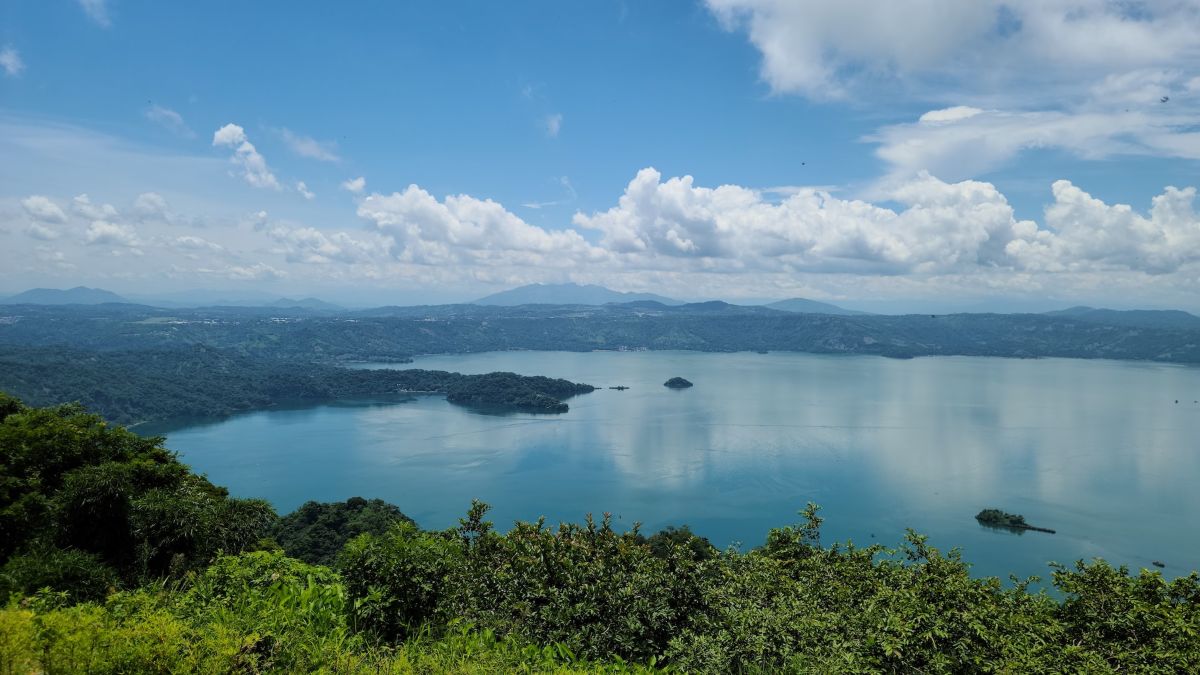A Quick Guide to Scuba Diving in El Salvador
4 min readScuba diving in El Salvador: Discover volcanic crater lakes with thermal vents, Pacific Ocean shipwrecks, and interesting marine life.
The post A Quick Guide to Scuba Diving in El Salvador appeared first on Central America.

Scuba diving in El Salvador: Discover volcanic crater lakes with thermal vents, Pacific Ocean shipwrecks, and interesting marine life.
El Salvador is one of Central America’s surfing meccas, and while it’s typically what happens on top of the waves that comes to mind when thinking about watery fun here, there’s plenty to discover beneath the surface if you’re interested and know where to go. The country offers some unique diving experiences centered around two main areas: the volcanic crater lake of Ilopango near the capital, and off the coast of Playa Los Cobanos along the Pacific coast. Each location comes with its own distinctive underwater adventure. Divers can explore ancient lava flows and thermal vents in Lake Ilopango, while Los Cobanos offers historic shipwrecks and marine life.
Lake Ilopango: Diving in a Volcanic Crater
It might sound strange to say, but El Salvador’s most popular dive site is near the capital city San Salvador in the volcanic crater lake of Ilopango. This remarkable body of water has a surface area of 75 square kilometers and reaches depths of up to 235 meters. Formed after a massive eruption in 563 AD, the lake sits at 470 meters above sea level, making diving here a unique altitude diving experience. For those interested in another volcanic diving experience, Lake Coatepeque, in the western part of the country near Santa Ana, offers similar opportunities at an altitude of around 750 meters, though it’s less frequently visited by divers than Ilopango.
Underneath the waters of Ilopango, divers encounter an array of aquatic life and geological features. The lake teems with small freshwater fish, particularly the distinctive Convict Cichlid (a small black and white striped fish named for its resemblance to old-fashioned prison uniforms), along with freshwater crabs and sponges. One of the most fascinating aspects of diving here is exploring the hot vents in the lake bed where warm water emerges from cracks in the rocks, surrounded by large sulfur deposits. The underwater landscape is further enhanced by lava flows along the cliffs and deposits of pillow lava, formed by ancient volcanic activity.
The lake maintains a warm temperature of around 85°F (26°C) most of the year, becoming even warmer during the rainy season (May-November). Visibility varies seasonally, with the potential to reach up to six meters. During the rainy season, surface visibility drops to 1-2 meters until you pass through the thermocline at around 12 meters, where the water becomes clearer but darker, creating a twilight diving experience. The dry season offers better visibility as algae dies off, providing clearer views of the underwater features.
Lake Ilopango also features several man-made diving sites. Three statues of the Virgin Mary sit at 18 meters, accessible to all certified divers, while advanced divers will find a three-meter statue of Christ the Redeemer at 27 meters. The lake also offers various diving locations around underwater mounts and islands, including the spectacular “Black Hole” dive site.
Playa Los Cobanos: Pacific Ocean Diving
Playa Los Cobanos, located close to the port of Acajutla in western El Salvador, offers a different more traditional ocean diving experience with its marine park setting. The best diving season runs from November to March, when conditions are optimal. The marine life here is fun and engaging, with regular sightings of barracuda, green moray eels, parrot fish, and angel fish. Lucky divers might encounter olive ridley and green turtles, and there are occasional visits from dolphins and rays. During the season, even whale sightings are possible, while stone triggerfish and spotted boxfish are common residents of the rocky reefs.
The area is also home to several fascinating wreck diving opportunities. The SS Douglas and SS Cheribon rest at depths accessible to all certified divers, while the SS Arce lies at 30 meters, reserved for those with advanced certifications. These century-old vessels have become artificial reefs, creating unique habitats for marine life.
When to Dive and What to Expect
Lake diving at Ilopango is possible year-round, though the dry season offers better visibility. Ocean diving at Los Cobanos is best from November to May when the sea is calmest and clearest, with the prime Pacific diving season running from November to March for optimal conditions.
Though the Pacific Ocean lacks the colorful corals found in places like Belize and Honduras on the Caribbean side of Central America, El Salvador offers unique diving experiences combining volcanic formations, freshwater environments, and marine ecosystems. Whether you’re an experienced diver looking for something different or a beginner seeking certification, El Salvador’s diving spots provide memorable underwater adventures far from the typical tourist track.



